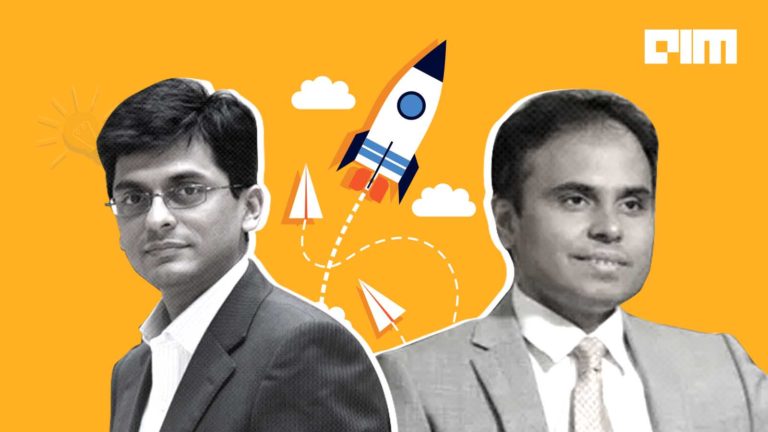The annual Analytics India Salary report presented by AIM and Jigsaw Academy is the only annual study in India that delves into salary trends and provides a comprehensive view of the changing landscape of analytics salaries. The report, now in its sixth year, look at the distribution of average salaries across several categories including, years of experience, metropolitan regions, industries, education levels, gender, tools, and skills.
The Data Analytics function is experiencing significant growth and development in terms of skills, capabilities, and funding. The development of the data science domain is evidenced by the high salaries drawn by analytics professionals across the organization, with Analytics professionals drawing the highest median salary of almost all IT professionals.
The scale of growth of any domain is evinced by the salaries drawn by experienced professionals or the growth in the proportion of experienced professionals drawing higher salaries. This past year has indeed been an effective growth year for the Data Science and Analytics domain, with an increase in the median salary in the analytics function and a corresponding increase in salaries and the proportion of professionals in the upper experience cadre.
Read reports from previous years.
2019 | 2018 | 2017 | 2016 | 2015
Key Highlights
- As of March 2020, the median salary of analytics professionals in India is INR 14.4 Lakhs – a 14.3% growth over the 2019 median salary of Rs. 12.6 Lakhs.
- While the salaries in the entry-level and medium experience level positions have remained almost the same as last year, the salaries in the mid-senior (6-10 years’ experience), and senior-level (10-12, and 12+ years’ experience) have registered the highest median figure over the last 4 years.
- The proportion of the analytics professionals remains the highest in the entry and middle-income levels (0-6 Lakhs – 33.3% and 6-10 Lakhs – 21.7%). However, these 2 segments have seen a significant drop in proportion over previous years.
- The percentage or proportion of employees in the higher- income levels (greater than 10 Lakhs) has substantially increased and constitutes approximately 45% of the total employee base in 2020.

SECTION 1: SALARY DISTRIBUTION ACROSS VARIOUS BRACKETS
This section covers the findings of the proportion size and median salaries of analytics professionals across experience and salary levels. While the median salary of all analytics professionals is 14.4 Lakhs, the greatest proportion of analytics professionals fall under the 3-6 Lakhs category at 24 %. This is followed by the 6-10 Lakhs salary level that has 21.6% of the analytics professionals.
However, 45.4% of all the analytics professionals fall under the higher income level, greater than 10 Lakhs. The salary levels of 10-15, 15-25, 25- 50 Lakhs have significant proportions of 17%, 16.2%, and 8.5% respectively. The proportions for these levels have risen from the corresponding 2019 percentages of 16.6%, 13.7%, and 6.8%, highlighting the shift to an established analytics market that commands higher salaries.

SECTION 2: SALARIES IN ANALYTICS COMPARED TO OTHER IT ROLES
The impact of any function or role within a broader domain is highlighted after comparing the salaries of that function with those of the broader domain. with those of the broader domain. For the Analytics function, the salaries earned by professionals are the highest vis-à-vis the salaries for other roles – underscoring the impact of analytics roles across organizations.
The median salary for analytics professionals, at Rs. 14.4 Lakhs is 16% higher than the salaries for the next highest salary of Cloud Developer professionals. Similarly, the salary for an Analytics professional is 26% higher than that of a Software Engineer, and 74% and 77% higher than the salaries of an IT Developer and a Java Developer respectively.

SECTION 3: SALARY TRENDS ACROSS CITIES
Once again, Mumbai emerges as the destination for highest salaries for analytics employees at 15.6 Lakhs per annum as median salary, followed by Bengaluru at 14.7 Lakhs.
- The sector-location niche of Mumbai and the higher cost of living in the city has pushed the salaries of analytics personnel to the highest level across cities.
- A majority of Domestic Banks (ICICI and HDFC Bank), Consulting Firms, MNC Banks, and Investment firms (Nomura), have their head offices, financial and investment centres, and analytics operations based out of Mumbai –moreover, many Domestic conglomerates, such as Reliance, Tata Group, and Aditya Birla have their head offices and analytics centres based in Mumbai as well. This pushes the median salary of Mumbai to the highest level.
- The IT and analytics hub of Bengaluru has the second-highest median salary, of analytics professionals, at Rs. 14.7 Lakhs.
- Most of the analytics startups have their respective offices in Bengaluru. Apart from this, most of the other industry startups, such as Ola and PhonePe have their management and analytics centres based out of Bengaluru. These factors, coupled with the presence of large analytics operations for some MNC captive centres, such as Shell, MNC IT firms, such as Accenture, Oracle, Dell, and Capgemini, and Domestic IT firms, such as TCS, Infosys, and Wipro, pushes the median salary of Bengaluru to the second position.
- Similarly, the BPO/KPO hub of Delhi NCR registers the median salaries for analytics personnel at the 3 rd place at 13.5 Lakhs
- Pune and Hyderabad are placed 4th and 5th in terms of salaries at 12.2 Lakhs and 12.1 Lakhs respectively.
- The salaries of analytics professionals in Chennai is the lowest at INR 11.6 Lakhs.
Although Chennai does have numerous analytics start-ups, IT hubs and captive centres, the lower cost of living, a key determinant in computing the salaries offered, brings down the median salary of Chennai.

SECTION 4: SALARIES ACROSS EXPERIENCE LEVELS
One factor to determine the industry reward for knowledge and experience is the salary offered across experience levels. In this section, the salaries are compared by the number of years in the analytics function or industry. With domestic and international enterprises setting up dedicated analytics functions, the number of senior-level employments across organizations has risen.
Senior analytics roles are no longer restricted to banks and telecom firms that are evaluating and analyzing consumer numbers and trends. The platform- industry startups, such as Swiggy, Pepperfry, and Ola, are experiencing high consumer acquisition, and are hiring senior professionals to gain insights and intelligence on consumers, markets, and the next growth products. Hence, employees seeking a jump in salaries should upskill to core analytics capabilities and functions –
this would help them realize a maximum 59% jump in salaries.
The median salaries of professionals with experience greater than 12 years is the highest across all experience levels. Moreover, the median salary for this level is the highest for all the years recorded so far – at 29.9 Lakhs. Similarly, the salaries for the experience levels of 10-12 years and 6-10 years are also the highest recorded over the last few years at 18.9 Lakhs and 13.6 Lakhs respectively, highlighting the increase in salaries for the advanced experience levels – signifying the compensation growth as one progresses the ladder of experience.

SECTION 5: SALARIES ACROSS INDUSTRIES
- Analytics professionals in the Telecom sector, as they did last year, have the highest median salaries across all sectors at 19.8 Lakhs. This is reflective of the churn taking place in the industry and the level of data to be managed and analyzed by the firms – 1 billion customers, hundreds of data plans and services, weekly or monthly rotating schemes, several customer-oriented marketing instruments, millions of points of sales, and operations across thousands of telecom circles/regions.
- The professionals in the Energy / Industrials sector command a salary of Rs. 18.2 Lakhs. This is indicative of the adoption of analytics to cut down costs and improve efficiencies – through increased asset monitoring, real-time energy/performance tracking through IoT, and the implementation of end- to- end decision support systems.
- The Media & Entertainment and e-commerce sectors figure lower in rank in terms of employees’ salaries at 13.7 and 13.2 Lakhs respectively.
- The Banking sector is one of the earliest adopters of analytics in India. Moreover, after the IT companies, banking organizations are the largest recruiters of analytics professionals in India. The median salary for Banking for analytics professionals currently is in the middle of the spread at 15.7 Lakhs.
- The Energy / Industrials sector has the highest number of professionals (7.1%) in the upper salary bracket of 50 Lakh and above. This is followed by the Telecom sector that has 7% of its professionals in the bracket of salaries greater than 50 Lakhs.
- Finally, the largest proportion of entry-level analytics professionals are employed in e-commerce s sector at 47%, commanding salaries less than 6 Lakhs per annum.
- While last year saw a net decrease in median salary for a couple of sectors, this year all the sectors saw an increase in median salaries from the marginal (Travel and Hospitality) to the significant (Media & Entertainment).

SECTION 6: SALARIES ACROSS DATA SCIENCE ROLES
Developing greater skills and capabilities is one of the most critical factors facilitating an increase in salary for analytics professionals. Organizations are increasingly transferring data to the cloud and adopting tools like Python, Spark, Qlikview, and SAS to analyse data. This requires professionals with advanced analytics skills across numerous technologies (R, Python, etc), platforms (AWS, Azure, etc), and modelling techniques (segmentation, forecasting, etc).
In the data science talent group, Artificial Intelligence Engineers, as they were last year, are paid the highest median salaries at 15.7 Lakhs, a 7% increase over the 14.8 Lakhs they were paid in 2019. The median salaries for reporting and MIS professionals are the lowest and the same as last year at 8.6 Lakhs.

SECTION 7: SALARIES BY COMPANY TYPES
In this section, the types of companies have been classified on the basis of the core operations (captive, domestic firms, IT service providers) of the organizations.
Captive centres are Global In- house Centres (GICs) for large MNCs that have operations in India. Analytics and reporting are provided in-house by the captive centres for the companies’ core global businesses. Hence, analytics play an essential role across the GICs. Typically, the captive Centres fall within investment banking, such as BlackRock, broad-based financial institutions, such as JP Morgan and American Express, and pharma majors, such as Merck and Pfizer – such firms have a portfolio of high margin products and services targeted at global clients, markets, and customers. Hence, the salaries of analytics personnel within these Captive Centres are at the highest band of all median salaries at 18.7 Lakhs, a 22.4% increase over the salaries offered in 2019. This is the biggest increase year-on-year for all the company types.
Consulting firms have large analytics operations – they provide analytics services either as a standalone function or as part of the entire consulting package. Within the entire package, they leverage analytics to draw inferences and recommendations for their clients. These two services are provided for both global and domestic clients from their India operation centres. Consulting firms thus offer the second-highest salaries at 16.2 Lakhs, a 13.5% increase over salaries offered in 2019.
Many domestic Indian firms, like Reliance Industries, Godrej, and Aditya Birla, have set-up exclusive analytics units for their enterprise-wide services. As these consumer-focused firms are inundated with data on hundreds of millions of Indian consumers and are pushing to compete with each other and with MNCs, they require real-time and actionable analytics and insights at almost every stage of the value chain. The Domestic firms thus offered the third-highest median salaries of 15.1 Lakhs, a 15.8% increase over the salaries offered last year.
Indian startups that included such companies as Ola, Swiggy, Pepperfry, and Paytm, offered the smallest hike over last year. This is representative of this sector, considering many of the startups registered significant losses (Ola, OYO, and Paytm) despite impressive top-line and customer growth. Indian startups offered median salaries of 14.4 Lakhs, the lowest increase of 11.2% over median salaries in 2019.
Boutique analytics firms provide analytics-as-a-service and include such firms as Ugam Solutions and LatentView Analytics to name a few. The boutique analytics firms offered 13 Lakhs in median salaries – a 12.6% increase of median salaries over last year.
Finally, large IT service providers that have legacy analytics functions, which offer services based on the offshore model to global clients, offer the lowest median salaries in analytics. Many of these firms have long-standing clients and have not experienced much churn in their client portfolio and correspondingly have not significantly transformed their respective analytics’ functions. As a result, the median salaries offered are at the lowest band at 12.1 Lakhs, an 11.6% increase over last year.

SECTION 8: SALARIES BY EDUCATION QUALIFICATIONS
The salary trends by education level are similar to last year – with engineering undergraduates from top-tier institutes drawing the maximum median salary of 24.3 Lakhs in their analytics roles. They are followed by management post-graduates from top-tier institutes drawing salaries of 23.7 Lakhs. On the flip side, an employee with an engineering undergraduate degree from the wider pool of institutions earns a salary of 13.3 Lakhs.
Moreover, an employee from the wider pool of MBA institutions can command a salary of 14.6 Lakhs. Hence, an engineering degree from a top-tier, premier institute, can earn employees 80% more than those employees from the wider engineering undergraduate pool. Similarly, a degree from a premier management institute can earn the employees 63% higher than the employees that have an MBA from the wider management graduate pool.
While a master’s degree is significant, considering that 62% of the workforce are master’s graduates, an MBA degree from a top-tier institute would enable employees to command a higher salary. Non-MBA postgraduates command a salary of 12.8 Lakhs, while non-engineering undergraduates command a salary of 12.4 Lakhs. Finally, PhDs earn the third-highest salary at 22.6 Lakhs and account for a very small proportion of 1.2% of the workforce.

SECTION 9: GENDER SALARY GAP
While the analytics function has seen significant overall growth in terms of salaries and capabilities, the salary disparity between women and men employees still exists. The low representation of women in the analytics function and the broader IT domain is highlighted in our Women in AI report. This low representation exists because of the association of analytics, and the broader science and technology functions with men, while women are associated more with functions related to social sciences and arts.
Intervention from the Central and State Governments, and Labour departments, was suggested to reduce the gender gap across the analytics function. Similar action would be required to address the salary gap, for a given level of experience and capabilities, that exists across salaries – men command a median salary of 15.7 Lakhs, while women command a median salary of 10.7 Lakhs. The median salary of women is thus 32% lower than the median salary of men and is 26% lower than the overall median salary of 14.4 Lakhs.
This year, the median salary gap between the salaries of men and women has marginally reduced to 32% from last year’s large gap of 33% – which implies that the salary hike commanded by women professionals has been higher than that of men professionals – 16.3% for women v/s 14.6% for men.

SECTION 10: SALARIES BY TOOLS
Analytics professionals specializing in Python commanded the highest salary at 15.3 Lakhs. Python professionals topped the salary chart for tools last year as well, commanding a salary of Rs. 15.1 Lakhs. This year, Python is followed by R, which commands a salary of Rs. 14.4 Lakhs.

CONCLUSION
The demand for analytics
professionals continued to
grow through 2019-20, and this
is revealed by the percentage
salary hikes professionals have
received in the past year. With a
median salary of INR 14.4 Lakhs,
professionals commanded a
salary 14.3% greater than that
received the previous year,
and the highest median salary
commanded since this salary
study began in 2015.
While there has been a growing demand for experienced professionals, greater numbers of professionals are entering this field, thus moderating the salary increase – this is exhibited by the greatest proportion of professionals in the 3-6 Lakhs salary band, who constitute 24% of the entire employee pool.
Nonetheless, the proportion of employees in the higher salary levels is significantly high this year – 45.4% of the professionals draw salaries greater than 10 Lakhs. Mumbai, as it did for the Cybersecurity salaries and Women in AI salaries, tops the salary commanded by analytics professionals at 15.6 Lakhs. This is understandable because of the number of financial institutions, including the captive centres of MNC financial firms, and the domestic firms headquartered in Mumbai. In terms of sector, companies in the Telecom sector offer analytics professionals the highest median salary at 19.8 Lakhs, while in terms of company type, the Captives, mostly comprised of financial and pharma companies’ in-house analytics centres, offer their employees the highest median salary at 18.7 Lakhs.
In conclusion, fresh graduates considering a career in IT, and experienced IT or domain professionals considering a career shift should consider a career in the analytics domain and upskilling to an analytics capability respectively. Moreover, such professionals could look at the Telecom sector or Captive focused companies for a suitable role. There is ample opportunity for growth, in terms of learning, capability, and compensation in the analytics function – analytics professionals commanded the highest salary across all IT functions.




















































































